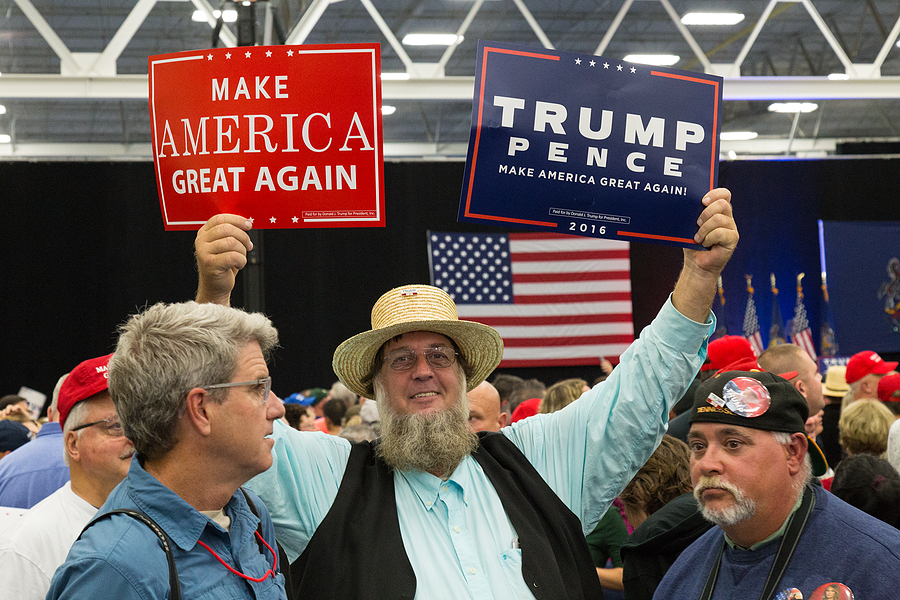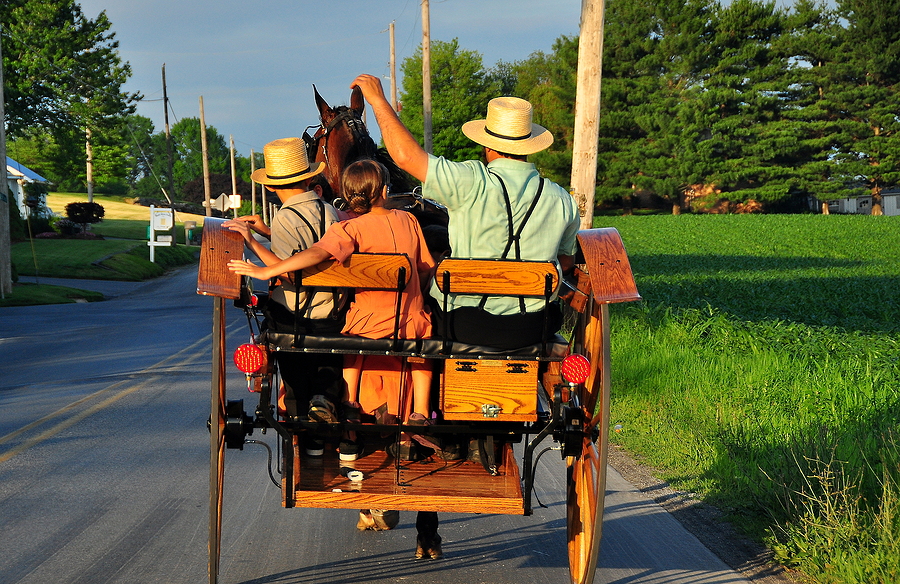In Pennsylvania’s 2024 election, the Amish community showed up at the polls in “unprecedented numbers.”
The drive behind getting Amish to the polls on Nov. 5 is reportedly linked to a raid earlier this year on a raw milk farm in Bird in Hand, Penn., according to reporting by the New York Post.
Bird in Hand is in Lancaster County, which has the highest Amish population in the United States. Amish comprise an estimated 45,000 of Lancaster County’s 558,000 population.
The raid – linked to reports of illnesses from raw dairy products – by the Pennsylvania Department of Agriculture on Amos Miller’s farm on Jan. 4 was seen by many Amish as excessive government interference, prompting them to become more politically active.
“That was the impetus for them to say, ‘We need to participate,’” a source told the New York Post. “This is about neighbors helping neighbors.”
That surge in voter participation appears to have favored the Republican Party, particularly in support of Donald Trump, whose platform advocates for restricting government overreach.

While the exact number of Amish voters remains unclear, the New York Post reported notable sightings of Amish horse-and-buggy rigs at polling locations, signaling their increased involvement in the electoral process.
In the 2024 Pennsylvania election, Trump won 50.5 percent of the vote with 3,502,680 ballots while Democrat Kamala Harris received 48.5 percent with 3,360,119 votes.
That was an improvement for Trump over the 2020 Pennsylvania election where Democrat Joe Biden won 50.01 percent of the popular vote with 3,458,229 votes and Trump receiving 48.84 percent with 3,377,674 votes, and no electoral votes.
Prior to the election Scott Presler, a Republican strategist who leads Early Vote Action, was clear that one component of his voter registration efforts to boost GOP support ahead of the 2024 election, focused on key Pennsylvania demographics, including the Amish.
Presler did not respond to a request for comment from DVJournal.
Presler’s team set up registration tables in key areas specifically focused on signing up Amish voters.
“There are 90,000 Amish in Pennsylvania, and I know in the 2020 election, only 2,000 Amish voted,” Presler said in an appearance on Megyn Kelly’s podcast. “We are meeting the Amish where they are—setting up voter registration tables at key locations like Roots Country Market [in Manheim, Pa.] and The Green Dragon Farmers Market [in Ephrata, Pa.]. We’re emphasizing that the Democrat Gov. Josh Shapiro is waging a war on their values, including school choice and religious freedom.”
By organizing on-the-ground efforts and promoting early voting options, Presler sought to mobilize these underrepresented groups and narrow the voter registration gap between Democrats and Republicans in the state.
Cory Anderson, Ph.D., is a postdoctoral scholar at the Population Research Institute at Pennsylvania State University. He is also the director of the Amish & Plain Anabaptist Studies Association and serves as editor of The Journal of Amish & Plain Anabaptist Studies.
Anderson pointed to two scholarly articles he wrote and posted to his website.
In one article titled, “An Emerging Non-Voter Bloc,” Anderson noted “plain people,” which includes the Amish and other similarly situated communities, pose a unique dilemma for political strategists due to their reluctance to participate in elections.
“As one of the fastest-growing groups in the Commonwealth, plain people’s potential electoral clout is undeniable,” Anderson wrote. “Pennsylvania’s plain Anabaptist population stood at 128,195 individuals in 2020, spread across approximately 45 denominations. While representing only 1 percent of the Commonwealth’s population, plain people are a rapidly expanding demographic, fueled by high retention rates and families typically numbering six to seven children.”
Anderson noted the group, which includes the Amish and Mennonites, typically abstains from voting as part of their religious convictions, which emphasize separation from government and non-involvement in state affairs.
According to Anderson, plain people have a political and cultural distaste for government due to a long history of persecution.
He also noted plain people tend to lean Republican, particularly in high-stakes elections, due to opposition to excessive government regulation and alignment with conservative moral views.
Political action committees targeting that demographic, such as the Amish PAC, have sought to register more plain voters in recent elections.
In another article on the issue titled, “Beyond the Ballot Box Margins,” Anderson reviewed news coverage of the plain people community in the 2024 election cycle.
Anderson noted recent media coverage has focused on Pennsylvania’s Amish community in light of their increasing political involvement, particularly in response to the raid on the Amish raw milk farm.
He noted news outlets like The Times of London, The Economist, and regional media have explored how the Amish’s growing numbers could influence the state’s elections, with some Amish voters expressing support for Donald Trump, largely due to his stance on preserving liberty over government intervention.
“When explaining plain people’s traditional voting abstention, media accounts generally default to simplified narratives about two-kingdom theology or separation from the world. While these touchstones aren’t inherently wrong, they overlook deeper cultural thinking,” Anderson wrote.
Anderson cherry-picked quotes from interviews conducted by mainstream media with Amish residents, including voices from Lancaster County, reveal a range of perspectives on political participation, from strong support for Trump to hesitations based on religious beliefs.
However, he made particular note of the Republican outreach strategy.
“The evolution of Republican outreach strategy—particularly the embrace of mail-in voting as a solution to both practical and social barriers—represents a significant shift from previous election cycles,” Anderson wrote. “The Amos Miller raw milk case has emerged as a powerful symbol of government overreach, though plain people’s responses to it vary from catalyzing political engagement to reinforcing separation principles.”

